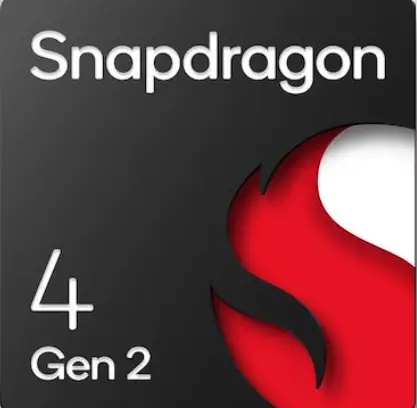Apple A14 Bionic vs Qualcomm Snapdragon 4 Gen 2
We’ve put together a comprehensive comparison of the newly released A14 Bionic and Snapdragon 4 Gen 2 SoCs, brought to you by Apple and Qualcomm respectively. This analysis breaks down the pros and cons of these 6-core and 8-core CPUs, evaluated through their Geekbench, Antutu, and 3DMark scores, along with their technical details.
Review
CPU Performance
Evaluation of Single-Core and
Multi-Core Processor Performance
Gaming Performance
Gaming and OpenCL/Vulkan
Performance of the Graphics Processing Unit (GPU)
Battery life
Energy Efficiency in Battery Usage
Tech Insist Score
Overall Performance Rating of the
Chip
Key Differences
Pros of A14 Bionic
- A14 Bionic has 40.91% higher CPU clock speed than Snapdragon 4 Gen 2 (3100 vs 2200 MHz).
- A14 Bionic has 48.88 % better AnTuTu 9 score than Snapdragon 4 Gen 2 (751 K vs 504 K).
- A14 Bionic has the latest instruction set, hence better than Snapdragon 4 Gen 2.
- A14 Bionic supports 33.20 % higher memory bandwidth than Snapdragon 4 Gen 2 ( 34.1 vs 25.6 MHz).
Pros of Snapdragon 4 Gen 2
- Snapdragon 4 Gen 2 has 50.02 % higher memory frequency than A14 Bionic ( 3200 vs 2133 MHz).
- Snapdragon 4 Gen 2 has 20.00 % smaller sized transistor than A14 Bionic ( 4 vs 5 nm).
Benchmarks
Evaluating performance through competitive testing in leading benchmarks.AnTuTu 10
| CPU | 203493 | 131871 |
| GPU | 284242 | 163570 |
| Memory | 131989 | 114048 |
| UX | 131211 | 94884 |
| Total score | 750935 | 504373 |
GeekBench 6
Single-Core Score
Multi-Core Score
3DMark
3DMark Wild Life Performance
| Stability | 77% | - |
| Graphics test | 50 FPS | - |
| Score | 8375 | - |
Specifications
Full list of technical specifications of A14 Bionic and Dimensity 9300CPU
| Architecture | 2x 3.1 GHz – Firestorm 4x 1.8 GHz – Icestorm |
2x 2.2 GHz – Cortex-A78 6x 2 GHz – Cortex-A55 |
| Cores | 6 | 8 |
| Base Frequency | 1800MHz | 2000MHz |
| Turbo Frequency | 3100MHz | 2200MHz |
| Instruction set | ARMv8.5-A | ARMv8.2-A |
| L2 cache | 128 KB | - |
| L2 cache | 8 MB | - |
| L3 cache | - | - |
| Process | 5 nanometers | 4 nanometers |
| Transistor count | 11.8 billion | - |
| TDP (Sustained Power Limit) | 6 W | - |
Graphics
| GPU name | Apple A14 GPU | Adreno 613 |
| Architecture | - | Adreno 600 |
| GPU frequency | - | 955 MHz |
| Pipelines | 4 | - |
| Shading units | - | - |
| Total shaders | - | - |
| FLOPS | 998 Gigaflops | - |
| Vulkan version | - | 1.1 |
| OpenCL version | - | 2.0 |
| DirectX version | - | 12 |
AI Accelerator
| Neural processor (NPU) | Neural Engine | Yes |
Memory
| Memory type | LPDDR4X | LPDDR5 |
| Memory frequency | 2133 MHz | 3200 MHz |
| Bus | - | - |
| Max bandwidth | 34.1 Gbit/s | 25.6 Gbit/s |
| Max size | 6 GB | - |
Multimedia (ISP)
| Storage type | NVMe | UFS 2.2, UFS 3.1 |
| Max display resolution | 2732 x 2048 | 2520 x 1080 |
| Max camera resolution | - | 1x 108MP, 2x 16MP |
| Video capture | 4K at 60FPS | 1K at 60FPS |
| Video playback | 4K at 60FPS | 1080p at 60FPS |
| Video codecs | H.264, H.265, Motion JPEG | H.264, H.265, VP9 |
| Audio codecs | AAC, AIFF, CAF, MP3, MP4, WAV, AC-3, E-AC-3, AAX, AAX+ | AAC, AIFF, CAF, MP3, MP4, WAV |
Connectivity
| Modem | - | Snapdragon X61 |
| 4G support | LTE Cat. 18 | LTE Cat. 18 |
| 5G support | Yes | Yes |
| Download speed 5G | Up to 7500 Mbps | Up to 2500 Mbps |
| Download speed 4G | - | - |
| Upload speed 5G | Up to 2500 Mbps | Up to 900 Mbps |
| Upload speed 4G | - | - |
| Wi-Fi | 6 | 5 |
| Bluetooth | 5.0 | 5.1 |
| Navigation | GPS, GLONASS, Beidou, Galileo | GPS, GLONASS, Beidou, Galileo, QZSS, NAVIC |
Info
| Announced | September 2020 | June 2023 |
| Class | Flagship | Mid range |
| Model number | APL1W01 | SM4450 |
| Official page | A14 Bionic official site | Snapdragon 4 Gen 2 official site |

